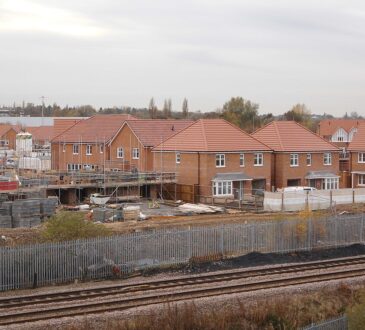
- Iron ore falls below $100 a tonne
- Rio Tinto and BHP shares knocked by steel boss warning
The northern hemisphere may be in the full swing of summer, but the world’s top steelmaker is already forecasting a “harsh winter” for the industry, which could reverberate down the line as lower iron ore prices knock earnings and dividends at the major mining companies.
A weak Chinese property market has finally filtered down to iron ore prices, as the steelmaking ingredient settled below $100 (£77) a tonne for the first time since November 2022. A warning from the world’s largest steelmaker, China Baowu Steel, helped tip the market into pessimism. “China’s steel industry will experience a ‘harsh winter’ that will be longer, colder and more difficult to endure than we expected,” said China Baowu chair Hu Wangming last week.
He said this winter could be worse than 2008 and 2015 when prices plummeted. The latter downturn saw the major miners slash costs as debt piles suddenly looked existentially risky.
Iron ore fell to $98 a tonne this week, continuing a downward trend since January, when it was sitting at $144 a tonne.
The shares of the major producers, Rio Tinto (RIO), BHP (BHP) and Vale (US:VALE) reflect this, dropping almost a fifth since May and 4-6 per cent this month. Recent interim earnings were propped up by copper, which hit record price levels in the first half.
Last month, the top executives of the major miners said China’s industrial output could help make up for the weaker property sector. “Demand from the Chinese property sector is now down by as much as 30 per cent from its peak in 2020,” said Rio Tinto chief financial office Peter Cunningham.
“However, manufacturing in China is strong with the energy transition at the heart of growth. The energy transition sectors accounted for nearly a third of Chinese GDP growth in 2023, and strong growth has continued in the first half of 2024.”
Fortescue Mining Group (AU:FMG) founder Andrew Forrest told The Australian that this price weakness was just a blip.
“Iron ore consumption doesn’t go up in a straight direction, it has a jiggered edge on an upward curve and we’re in one of those downward edges right now, but the trend will still be strong,” he said. “If you look at the big mega-trends out there, I’m not worried about their trends going up or down because they happen to go up or down towards an upward curve.”
There is also some surprise that the Baowu chair made such a statement. Panmure Liberum analyst Tom Price said: “His 2008 and 2015 demand correction analogies suggest that he thinks the industry’s currently heading into some kind of macro-scale growth shock.” Price added that the warning could just be a sign that Baowu is keen to cut down on contracted supply from the miners. “A feature of the 2008 and 2015 rust trade’s demand/price corrections was cancellations [and] deferrals of contract tonnes,” he said.
Cuts to forecasts for 2024 earnings among the iron ore giants have started to land. The mean estimate for Rio Tinto’s full-year earnings per share is down 4 per cent in the past six weeks. Dividends also look to be under pressure – since the end of June, the consensus analyst forecast for Rio’s total payout for this year has dropped 5 per cent to 421ȼ, compared with 435ȼ in 2023. Rio paid out 50 per cent of underlying earnings as its interim dividend and can increase this to 60 per cent under its payout policy.
Structurally sound
Price said the industry is very different to when the 2015 downturn hit. “When those corrections occurred, these [miners] were flat-out deploying vast-scale, debt-funded mining capability,” he said. “China’s ore and steel demand may be buckling right now, but as the majors are arguably in their best financial shape of the last 20 years, they can deal with this demand/price downswing.”
BMO Capital Markets analyst Colin Hamilton said the price is unlikely to improve this year. “Given steel production is likely to fall, the path of least resistance for the price is probably lower at present,” he said, forecasting a $100 per tonne average price for the second half.
The result of the steel glut in China is likely to be consolidation within the steelmakers, he said, adding that the government is likely to intervene. “If It doesn’t, some risk contagion into the banking system might emerge – steel is an important industry, particularly for the loan books,” Hamilton said.
An intervention is unlikely to prop up miners, instead focusing on keeping the best steelmakers afloat. But it could stabilise spot iron ore prices. Hamilton said steelmakers had kept production running to demonstrate resilience in the face of low margins in order to survive a consolidation cycle, so steel output may drop in the coming months, cutting oversupply and helping prices.
Further out, the miners are betting big on demand for iron ore remaining strong. Rio Tinto is pumping billions of dollars into the Simandou project in Guinea, which will ramp up high-grade output from next year, while expansion in the Pilbara is ongoing.





